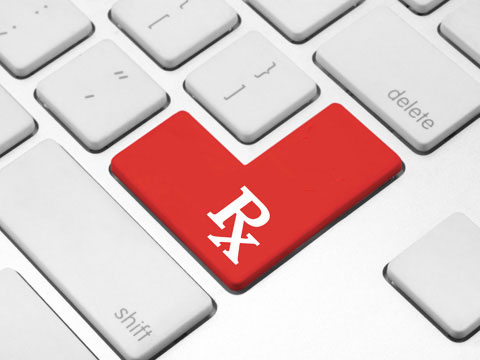Artificial Intelligence in Healthcare
Lowering costs and improving health outcomes are two of the biggest drivers of expanding the artificial intelligence market in health care. eHealth Initiative, a nonprofit organization working at the intersection of health and technology, and Cerner, a global leader in health care technology, explore this evolving role of AI in a new report titled, “Artificial Intelligence (AI) in Healthcare.”
The brief identifies three key areas for AI implementation in health care: physicians’ clinical judgment and diagnosis, AI-assisted robotic surgery and virtual nursing assistants. The publication also cites key data that indicates a growing demand for AI in health care throughout the next decade, while presenting cost savings to the health care system. Experts estimate AI applications could potentially create $150 billion in annual savings for the country’s health care economy by 2026.
The report explores several areas providers should consider for successful adoption of AI, including:
- Institutional Readiness and Network Capabilities
- Ethical Standards for Privacy and Safety
- Data Governance
- Data Types
- Access to High-Quality and Unbiased Data
- Evaluation of Technology Models
- Cost Savings
The Machines are Here & are Improving Healthcare
Artificial intelligence (AI), and its sub-disciplines, machine learning (ML) and deep learning (DL), are beginning to play a significant role in healthcare. As AI moves out of research labs and into real-world applications, it is becoming a disruptive force in transforming patient care. These technologies, coupled with affordable data storage and computational power, enable healthcare organizations to analyze an immense volume and variety of data. Intelligence allows for progressively deeper insights which lead to proactive care, reduced future risk, and streamlined work processes. AI technologies are providing innovative solutions for precision medicine, organizational efficiency, and improved health outcomes.
are beginning to play a significant role in healthcare. As AI moves out of research labs and into real-world applications, it is becoming a disruptive force in transforming patient care. These technologies, coupled with affordable data storage and computational power, enable healthcare organizations to analyze an immense volume and variety of data. Intelligence allows for progressively deeper insights which lead to proactive care, reduced future risk, and streamlined work processes. AI technologies are providing innovative solutions for precision medicine, organizational efficiency, and improved health outcomes.
Due to the significant volume of data created during patient care, the healthcare industry is well positioned to take advantage of the advancement and commoditization of computer algorithms and hardware. AI enables more automated decision-making on important data sets emerging from the Internet of Things (IoT), electronic health records (EHRs), and patient-generated health data. AI also gives machines the ability to mimic human behavior, an increasingly valuable feature in an industry that is experiencing high costs, high rates of physician burnout, and an increased focus on the patient experience.
On September 6, 2018, eHealth Initiative Foundation and Booz Allen Hamilton hosted a multi-stakeholder roundtable meeting to discuss expert opinions on the challenges and opportunities for AI and ML in healthcare. The meeting convened senior executives from provider, government, technology, pharmaceutical, clinical research, and professional organizations, representing radiology, pathology, cardiology, and other groups. This brief addresses the state of the field and includes examples of how AI and ML are being used within the industry; the challenges and barriers to the adoption of AI; current federal government initiatives; and where AI and ML may be headed in healthcare’s future.
eHI's Comments on the RFI Regarding the 21st Century Cures Act EHR Reporting Program
HHS and ONC sought public comments through a Request-For-Information (RFI) on the EHR Reporting Program established as Section 4002 in the 21st Century Cures Act and codified as Section 3009A in Title XXX of the Public Health Service Act (PHSA). Below is the letter and comments eHI's Policy Steering Committee submitted.
October 17, 2018
Don Rucker, MD
National Coordinator
Office of the National Coordinator for Health Information Technology (ONC)
U.S. Department of Health and Human Services (HHS)
Attention: EHR Reporting Program Request for Information
Mary E. Switzer Building, Mail Stop: 7033A
330 C Street SW
Washington, DC 20201
Dear Dr. Rucker:
Enclosed are the focused comments of the eHealth Initiative (eHI) on the Request for Information (RFI) Regarding the 21st Century Cures Act Electronic Health Record Reporting Program. eHI offers the expertise of our unparalleled multi-stakeholder membership to you as this process continues forward. We are the only independent non-profit, multi-stakeholder coalition dedicated to improving the quality, safety, and efficiency of healthcare through the use of technology and health information. eHI’s work and its membership have built needed coalitions and advanced the health IT field at critical junctures. We look forward to doing so once again.
The RFI seeks input on the EHR Reporting Program established as Section 4002 in the Cures Act and codified as Section 3009A in Title XXX of the Public Health Service Act (PHSA). HHS and ONC seek public comments on a great breadth and depth of issues including:
- Cross-Cutting Priorities: Priorities at the intersection of health IT product-related reporting criteria and health care provider reporting criteria; and
- Reporting Criteria Categories: Specific categories of prescribed Cures Act EHR reporting criteria (interoperability, usability and user-centered design, conformance to certification testing and other categories as appropriate to measure performance of certified EHR technology).
Nearly 50 questions are posed in this RFI whose answers -- as processed by ONC -- will have far-reaching impacts on health care and the health system as a whole. The information gathering and synthesis required to answer these RFI queries and to put consensus into action, eHI believes, will be a longer-term collaborative process, as suggested. Our organization has been a long time, prominent health IT leader and a historical fulcrum for convening critical consensus-based discussions. We offer eHI’s nationally recognized leadership, expertise and multi-stakeholder forums as this process progresses and would be honored to participate in the ONC criteria development process going forward. Given the broad landscape of issues raised in the RFI, eHI is in a unique position to offer on-going insight.
A timely example of this eHI capability is the work of eHI expert workgroups, which include:
- Value & Reimbursement
- Technology and Analytics
- Workflows to Improve Provider and Patient Experience
The workgroups’ mission includes looking at closing gaps in data, removing barriers to sharing information, educating patients and providers about consent to share data, incentivizing data sharing, remote patient monitoring and patient engagement. Many of these same issues are addressed by ONC’s RFI. On-going eHI workgroup dialogue and products --including best practices and recommendations for policy and industry -- will enable our organization to have valuable insights for ONC on the road ahead.
In addition, eHI’s extensive eHealth Resource Center -- a clearinghouse of success stories, reports, surveys and other material -- can provide important context and guidance as ONC moves forward on issues related to this RFI. This information hub can be accessed at: https://www.ehidc.org/resources.
Lastly, as ONC lays out further requirements and an implementation roadmap for the 21st Centry Cures Act Electronic Health Record Reporting Program, eHI urges you to recognize we are in a time of both great progress and tremendous regulatory overlay relating to health IT and EHRs. Acknowledging this reality, eHI recommends a careful, focused and efficient approach that builds on and utilizes existing initiatives and success, rather than duplicating or hindering current work. ONC should create high-value, additive policy and practice. Fundamentally, a focus on identifying and ensuring that gaps are filled should be the ONC approach in evaluating comments received on the RFI. Related to this, we urge ONC to pay careful attention to feedback from providers and developers on issues related to design and implementation of the 21st Century Cures Act Electronic Health Record Reporting Program.
eHI looks forward to working with you and other key federal government players on these issues.
If you have any questions or need clarification, please contact me at jennifer.covich@ehidc.org
Sincerely,
Jennifer Covich Bordenick
Chief Executive Officer
eHealth Initiative
Updates on Opioid Legislation
Congress recently approved unified legislation to address the national opioid epidemic and the President is expected soon to sign it into law. Dubbed the SUPPORT for Patients and Communities Act, it contains elements of the original House and Senate opioid bills and some compromises reached through the conference process. An overview and section-by-section details are available here.
Dubbed the SUPPORT for Patients and Communities Act, it contains elements of the original House and Senate opioid bills and some compromises reached through the conference process. An overview and section-by-section details are available here.
Among provisions not included in the final bill was Jesse’s Law (S. 581), which would have made changes to 42 CFR Part 2 to allow addiction and substance abuse disorder history to be displayed in a patient’s EHR.
Below is a summary of some key provisions in the final legislative package. Health IT relevant sections are given priority.
Included in the SUPPORT for Patients and Communities Act
- S.2904, Medicaid Substance Use Disorder Treatment via Telehealth Act
- CMS is required to develop rules and guidance about how states can obtain federal reimbursement under Medicaid for substance abuse telehealth services.[i]
- HR. 3528, Every Prescription Conveyed Securely Act
- Physicians who are prescribing controlled substances under Medicare part D must electronically prescribe the medication.[ii]
- HR 5797, ‘Individuals in Medicaid Deserve Care that is Appropriate and Responsible in its Delivery Act’ (IMD CARE Act)
- Originally, IMD excluded Medicaid from covering patients with substance use disorders who are receiving treatment in a mental health facility with more than 16 beds, because the lawmakers wanted states to primarily cover the price tag. Now, these patients will be given 30 days of residential treatment coverage if they are addicts with Substance Use Disorder[iii]
- S. 372 Synthetics Trafficking and Overdose Prevention (STOP) Act
- Packages going through the postal service will have to provide electronic advance data on where it is going, where it came from, who is receiving it, and what is in it.
- S. 3527, Comprehensive Opioid Recovery Act
- Creates a grant program for comprehensive recovery centers that include housing and job training, as well as mental and physical healthcare.
- Increases access to medication-assisted treatment that helps people with substance abuse disorders slowly wean themselves off the addicting drug.
eHI has been very active in tracking the opioid debate and is exploring ways to be impactful in best practice and policy. As this package moves to implementation in 2019, we will keep you updated.
[i] Frieden, Joyce. "Senate Passes Opioid Package." Medpage Today. October 03, 2018. Accessed October 11, 2018. https://www.medpagetoday.com/psychiatry/opioids/75484.
[ii] "House Passes Bipartisan Opioid Abuse Package with NACDS-backed E-prescribing Bill." NACDS Homepage. June 22, 2018. Accessed October 11, 2018. https://www.nacds.org/news/house-passes-bipartisan-opioid-abuse-package-....
[iii] "House Bill Partially Repealing "IMD Exclusion" Would Do More Harm Than Good." Center on Budget and Policy Priorities. June 20, 2018. Accessed October 11, 2018. https://www.cbpp.org/blog/house-bill-partially-repealing-imd-exclusion-w....
Data Management for Precision Medicine and Genomics in 2017
This report provides an environmental analysis of the current precision medicine and genomics market in the United States healthcare industry. According to the National Institutes of Health (NIH), precision medicine is “an emerging approach for disease treatment and prevention that takes into account individual variability in genes, environment, and lifestyle for each person.”Precision medicine goes hand in hand with “genomics” research.
Leveraging Patient Generated Health Data to Improve Outcomes and Decrease Cost
Increased private and public investment in analytics and “Big Data” is driving patient generated health data (PGHD). Due to its real-time nature, and rich information enabled by new technologies, big data science potentially offers advanced intelligence, with the aura of truth, objectivity, and accuracy. This report from eHealth Initiative and Validic explores PGHD and remote patient monitoring.
Enhanced Patient Matching is Critical to Achieving Full Promise of Digital Health Records
October 2018 report from the PEW Charitable Trusts.
This report lays out Pew’s research findings and recommendations, including steps that can be taken in the near term to improve patient matching and the infrastructure needed for more robust progress in the medium term and long term.
eHI Explains EPCS

EPCS Electronic Prescribing of Controlled Substances
What is e-prescribing?
E-prescribing (electronic prescribing) is a technological framework that allows medical practitioners to electronically write, then send prescriptions to a pharmacy. E-prescribing replaces handwritten prescription pads, faxes, and calling in prescriptions via phone. According to Surescripts data from their 2017 National Progress Report:
- 77% of ALL prescriptions are e-prescribed
- 90% of prescriptions for non-controlled substances are e-prescribed
- Only 21% of prescriptions for controlled substances (opioids, narcotics, etc.) are e-prescribed
Why is Electronic Prescribing of Controlled Substances (EPCS) important?
- EPCS allows for the security of electronic records, a reduction in fraud and abuse, and an improvement in patient safety
- EPCS positions pharmacies and providers to better share patient information by tracking the frequency, length of time, and dosages of patients using opioids
- The U.S. Drug Enforcement Administration (DEA) revised regulations to allow EPCS on a federal level in 2010. All states adopted the practice by 2015, but most did not have a mandate in place
Does EPCS help address prescription abuse? YES and New York is a model.
- In March 2016, EPCS was mandated for most doctors in the state of New York
- 97.8% of pharmacies are e-prescribing and 93.8% are EPCS enabled
- There was a 98% reduction in doctor shopping in the state
- There was a 70% reduction in prescription pad theft and loss
What are Prescription Drug Monitoring Programs (PDMPs) and why are they important?
- PDMPs are electronic databases that track controlled substance prescriptions in each state
- PDMPs can provide health authorities with real time information about prescribing and patient behaviors to facilitate nimble and targeted responses to the opioid crisis
What opioid legislations are pending as of 10/2/2018?
- H.R. 6, Substance Use-Disorder Prevention that Promotes Opioid Recovery and Treatment (SUPPORT) for Patients and Communities Act, draws on sixty-six bills that address opioid use prevention, recovery, and treatment and can affect electronic prescribing, prescription drug monitoring programs, and HIPAA laws, and include HR 5009, HR 3528, and HR 5801
- H.R. 6 sister legislation, S. 2680 The Opioid Crisis Response Act (OCRA)
- H.R. 5009. S581. Jesse’s Law requires drug addiction status to be added to all medical records
- H.R. 3528. Every Prescription Conveyed Securely Act requires all controlled substances prescribed by clinicians under Medicaid Part D to be electronically prescribed
- H.R. 5801. Providers Are Required To Note Experiences in Record Systems to Help In-need Patients (PARTNERSHIP) Act requires all states to establish prescription drug monitoring programs and healthcare providers to check the PDMP for the Medicaid patient’s prescription
Development and Validation of a Deep Learning Algorithm for Detection of Diabetic Retinopathy in Retinal Fundus Photographs
Gulshan, Peng, and Coram, 2016
In this evaluation of retinal fundus photographs from adults with diabetes, an algorithm based on deep machine learning had high sensitivity and specificity for detecting referable diabetic retinopathy.
Medical cost trend: Behind the numbers 2019
June 2018 report from PwC's Health Research Institue (HRI)
Employer medical cost trend has plateaued. While the predictability is a welcome change from the wild swings and peak double-digit trends in the 2000s, steady as she goes is not good enough. Medical costs continue to grow as a percent of total employee compensation, making even the current trend unsustainable.
PwC’s Health Research Institute (HRI) projects a 6 percent medical cost trend in 2019, consistent with the 5.5-7 percent range of the previous five years. But employers continue to struggle to contain their employee coverage costs. Medical costs continue to grow, yet the workforce’s health and performance aren’t improving. Average labor productivity growth of 1.1 percent over the last 10 years falls far below the 2.3 percent average of the last seven decades.1 Efforts by employers to cut utilization have mostly run their course. Employers and consumers are plagued by high prices that continue to grow because of new, expensive medical services and drugs, and other factors, such as consolidation. HRI’s analysis measures anticipated medical cost trend in the employer-based market, which covers about half of non-elderly Americans.2 Changes to government health insurance, including Medicare, Medicaid and plans sold on the public exchanges created by the Affordable Care Act (ACA), are not within this analysis’ scope.

